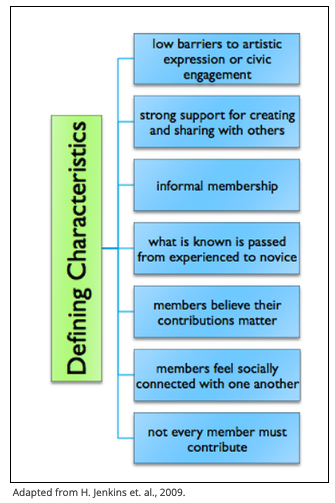Research and Innovation
This past week I was invited to speak as part of a panel presentation for my faculty during the research and innovation (R&I) week at the university. I collaborated with a colleague who is also innovating in similar ways, and we co-presented our work to a small but interested audience. The theme for this year’s R&I week was ‘Rise of the Machines’ so our talk focused on how we, as teacher educators in the faculty of education, use machines to enhance student learning. Our premise was that, through the strategic use of technologies, we are enhancing the ‘human’ machine. Research that informed our presentation included literacies Stordy (2015), affinity spaces Gee (2015, 2017), participatory cultures (Jenkins, 2009), and Kirschner, Sweller, Kirschner, & Zambrano (2018).
This quote from one of my essays was included:
“Kirschner et al. (2018) make some effort to address Cognitive Load Theory (CLT) by developing a collaborative cognitive load theory to address collective working memory and transactive activities, which can be explored in relation to instructors’ application of technology in the classroom. Transactive activities or events are defined in terms of costs from a give and get exchange or transaction which, in terms of CLT, apply to potential costs on WM or LTM when completing tasks such as media-supported discussions using Flipgrid, or knowledge construction using Mindomo for example (Kirschner et al., 2018).” and “This cognitive constraint can limit the WM of individual instructors to effectively use, create, and integrate multimedia production, but may be ameliorated through collaboration (Kirschner et al., 2017).” [HJ.DeWaard, essay on CLT and Learning with Technology]

The image I have used in course designs and in other presentations, from Jenkins’ work about participatory cultures is also shared here:
What I realize from this presentation is that my work as an open educator shifts others to think about their work and learning in relationship and context, beyond the limitations of bounded spaces. As we gathered at the end of the panel presentation, the other presenters and I engaged in meaningful conversation about the threads that connect our individual research and innovative practices. There may be opportunities ahead to build stronger threads between our individual areas of focus.
References
Gee, J. P. (2017). Teaching, learning, literacy in our high-risk high-tech world: A framework for becoming human. New York, NY: Teachers College Press
Jenkins, H., Purushotma, R., Weigel, M., Clinton, K., & Robison, A. (2009). Confronting the challenges of participatory culture: Media education for the 21st century. Cambridge, MASS: The MIT Press. Retrieved fromhttps://mitpress.mit.edu/books/confronting-challenges-participatory-culture
Kirschner, P., Sweller, J., Kirschner, F., & Zambrano, J. (2018). From cognitive load theory to collaborative cognitive load theory. International Journal of Computer Support and Collaborative Learning, 13, 213-233.
